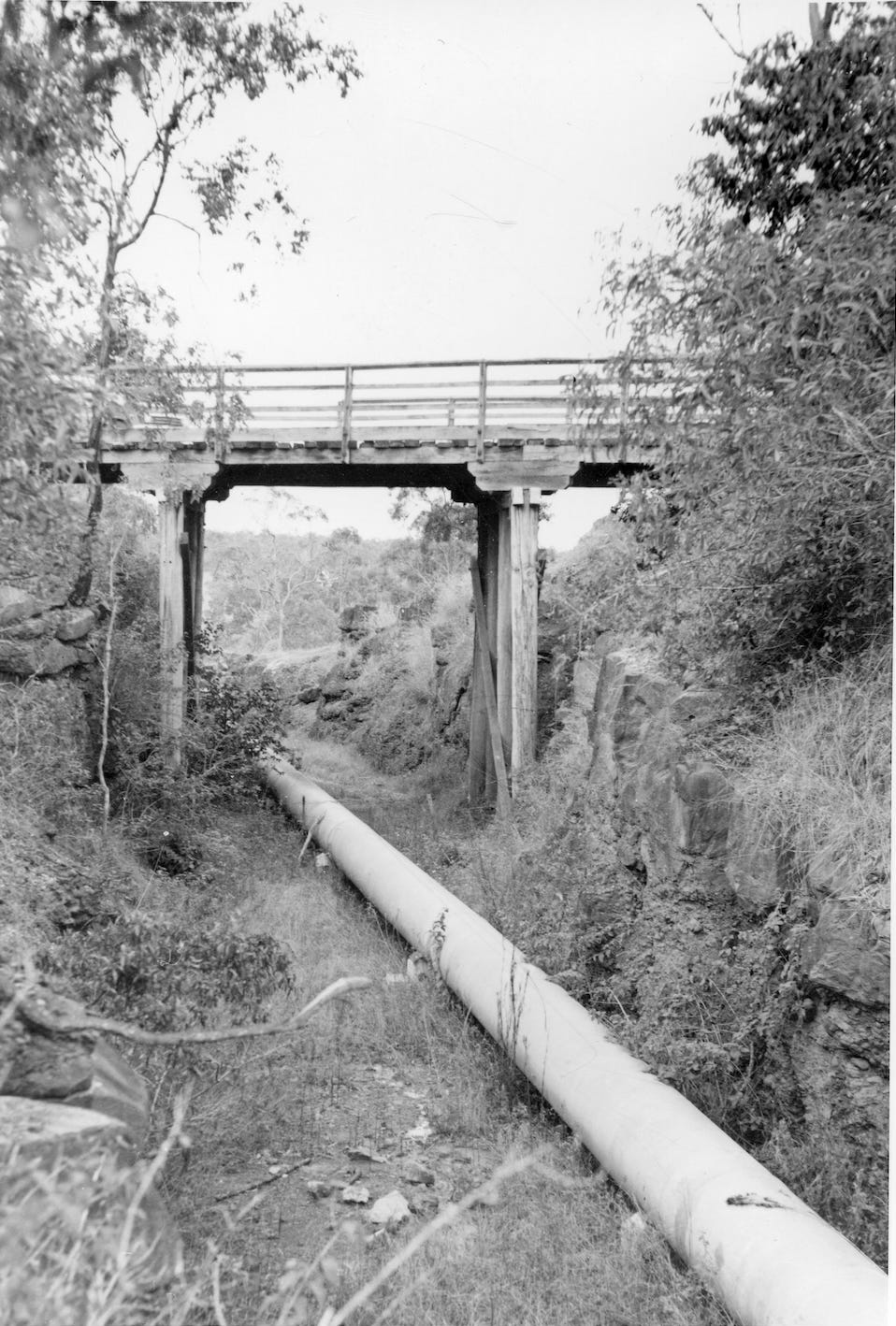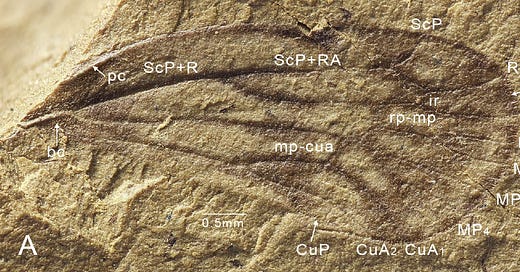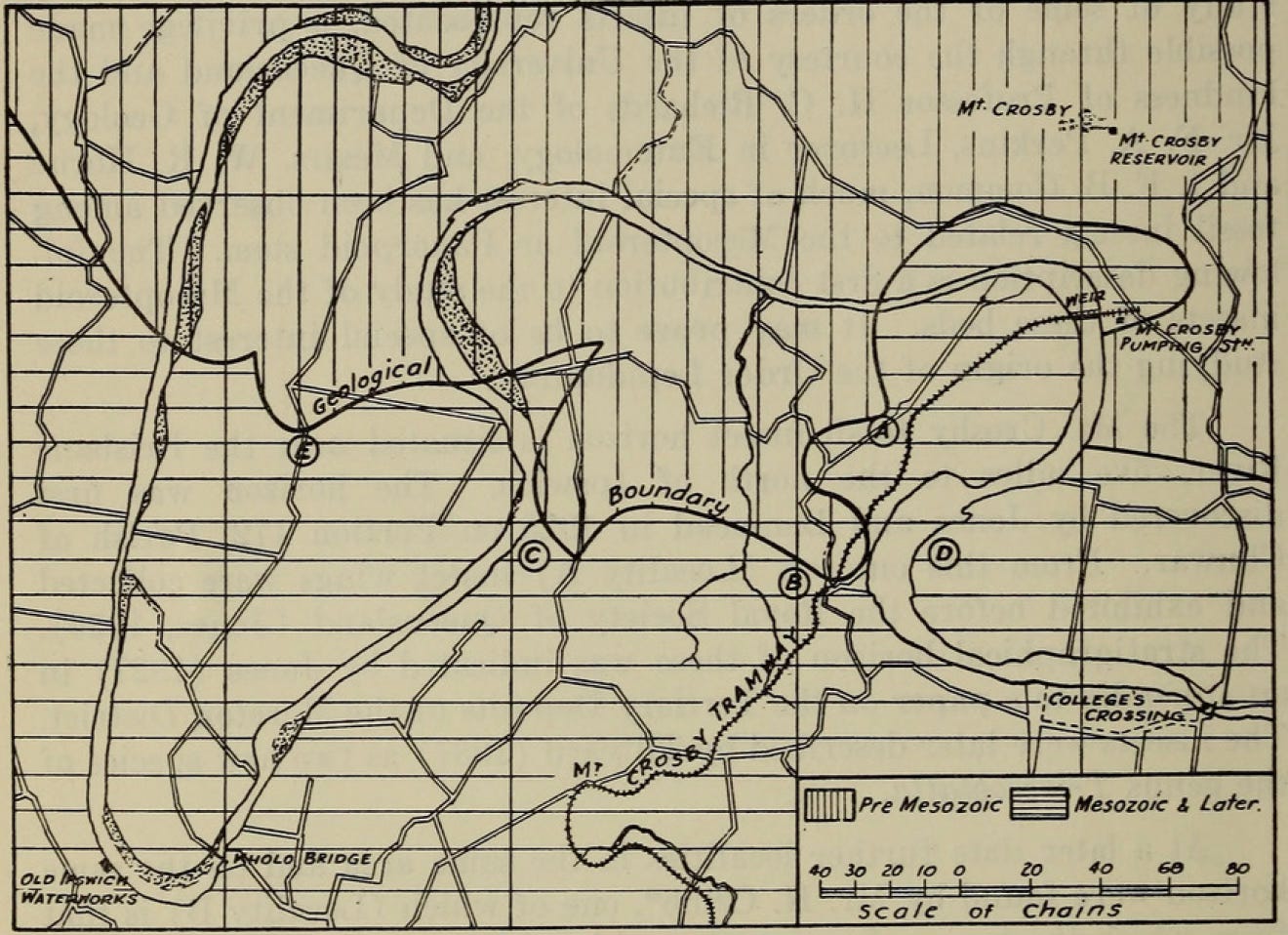Have you ever had trouble with cockroaches or plant-hoppers? Perhaps it’s time to declare a truce because, by my calculation, they have been here roughly one million times as long as us.
I base this estimate on the discovery of Upper-Triassic insects of the cockroach and hoppy types at Mount Crosby by Messrs Jones and Denmead in 1925.
What on earth made them look for fossils on Melon Hut Hill, I will never know, but they may have been inspired by the discovery of a rich horizon of insect fossils at Denmark Hill (Ipswich) in 1890 – the connection being that those were in shales underlain by a lot of other Triassic rock, the oldest of which break the surface about 5 miles north at Mount Crosby.
To give you an idea of the incredible age of these rocks, there is, between the Ipswich and Mount Crosby shales, a parade of coal seams named Bluff and Four-Foot, Bergins and Striped Bacon, Rob Roy and Braeside, Garden, Tantivy, Fiery, Waterstown, Tivoli, Bishop and Benley, and the seam near the old Kholo waterworks which I think we can all agree was called Heartbreak.
All that rock was laid down between 201 – 237 million years ago, the deeper Mount Crosby part being the oldest.
One way of appreciating how long this took is to imagine Mount Crosby, about 200 m tall, is being eroded away at a rate of say 1 mm per thousand years (not too ambitious). At that rate, in 200 million years, it would be as flat as the Maldives (and probably under water).
Not only that, during the time our insect fossils were preserved in the ground, the giant proto-continent Pangaea broke apart and bits drifted north and south to form Gondwanaland and Laurasia, and eventually the continents we recognise today.
Jones and Denmead found their fossils at Melon Hut Hill on Allawah Road and, suddenly, after 237 million years there was a bit of a fossil rush at Mount Crosby. More fossils were found by Mr H. Cribb near the old weir, also on the riverbank near Blackwall, and where the old railway crossed Allawah Road, each of these places being on the geological boundary between the pre-Mesozoic rocks of the D’Aguilar Range and the Triassic rocks to the south.
To be more precise, Cribb’s fossils lay “144 sleepers from the near side of the Allawah Road bridge”, which won’t help you much, but it amuses me because I remember thinking it was a really old bridge. Ipswichians will know what I mean when I say it gave a Waghorn-like experience when crossed.

The insect fossils were later described by Robin Tillyard (the former Chief Commonwealth Entomologist for Australia) as a new species of the genus Triassoblatta (… cockroaches).
Tillyard was an interesting, if not tragic, figure and one of Australia’s most famous scientists. He was born Robert Tillyard in Norwich, England, and immigrated to Sydney in 1904 where he took up work as the mathematics and science master at Sydney Grammar School. In 1914, he was seriously injured in a railway accident, from which he took a long time to recover. Shortly after that, he became Linnean McLeay Fellow at Sydney University and earned a trove of distinguished medals and memberships while working in New Zealand and for Australia’s Council for Scientific and Industrial Research (CSIR, the forerunner to CSIRO).
His boss at CSIR, Rohan Rivett, later recalled that, for all his brilliance, Tillyard suffered such mental stresses that he was a difficult subordinate … and resignations were pending from almost every scientist who came into frequent contact with him.
It all took an enormous toll on Tillyard and he resigned in 1934, after which, his state of mental health improved to the extent that he planned a great investigative tour of Queensland looking for insect fossils. In 1936, he set off on a six-week, 6000 km excursion, travelling mostly by train to regional places, which unfortunately yielded nothing except a painful experience and some neat fossils from Mount Crosby.
The lack of success and the discomfort of the experience is probably what led him to express his unmitigated distaste of Queensland’s inadequate railway system, poor hotels and “uncivilised” towns.
Queensland, he said, was “like a ripe paw-paw, well enough at each end but rotten in the middle”. Rockhampton was “decayed and it is time it was buried” and he related a story that a woman in Maryborough had expressed delight at finding a butcher who displayed his meats attractively - noting cheekily that the butcher was from Sydney.
All this caused an impassioned "telling-off" from Premier Forgan-Smith's wife but Tillyard doubled down, saying that any butcher selling meat to the Premier's wife is likely to be polite, before leaving Queensland for more civilised climes.
He did, however, remain enthusiastic about the new discoveries at Mount Crosby and reported on them only weeks before he was killed in a car accident near Goulburn in January 1937.
Each of us, just a fleeting moment in the Cenozoic.
References:
1. Norman B. Tindale, “Triassic Insects of Queensland”, Proceedings of The Royal Society of Queensland. 1944 Vol. LVI, No. 5. p37
2. Betty Dodds, “Mid-Triassic Blattoidea from the Mount Crosby Insect Bed”, The University of Queensland Press, Brisbane, Department of Geology Papers Volume III 1949 Number 10
3. Archives of Natural History, April 2020, vo. 47, No. 1 : pp. 92-104
4. Obituary Notes, Nature, January 30, 1937 : pp182-3
5. Jell, P.A. 2004 16 08: The fossil insects of Australia. Memoirs of the Queensland Museum 50(1): 1-124. Brisbane. ISSN0079-8835.
6. Lambkin, K.J. 2020. Planthoppers of the Queensland Triassic. Memoirs of the Queensland Museum-Nature. 60: 123–131. Brisbane. ISSN 2204- 1478 (Online), ISSN 0079-8835 (Print).
7. The Australian Women’s Weekly, 11 July 1936.





